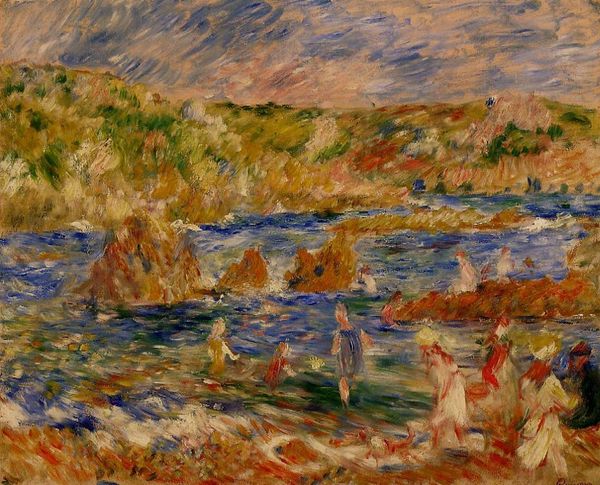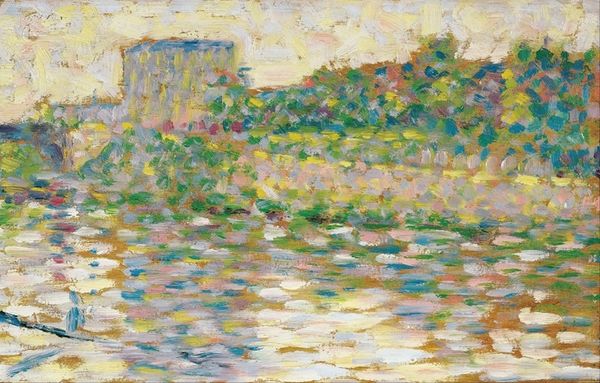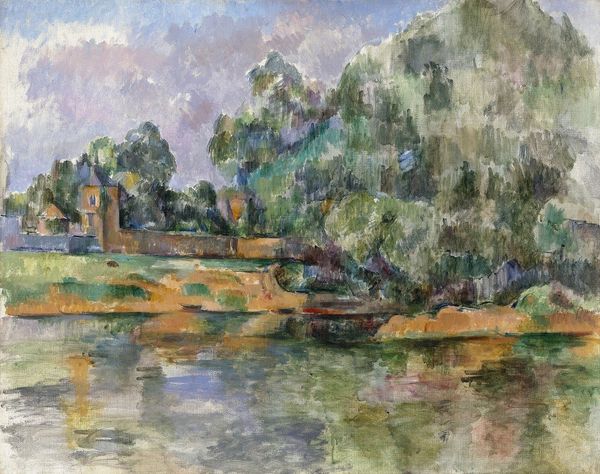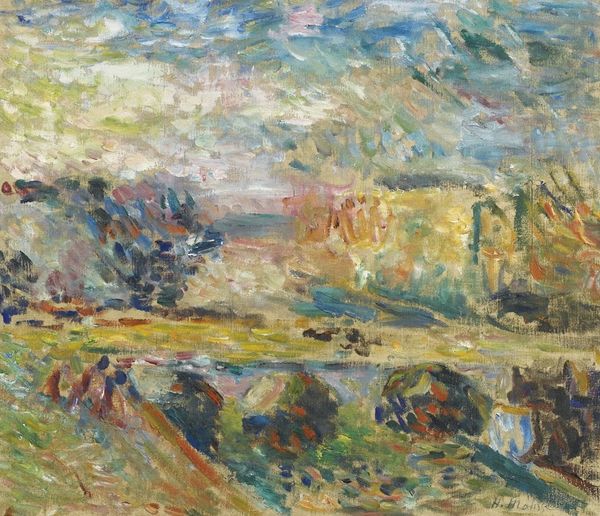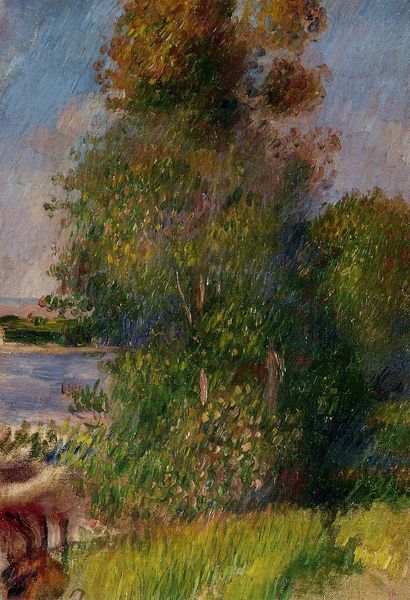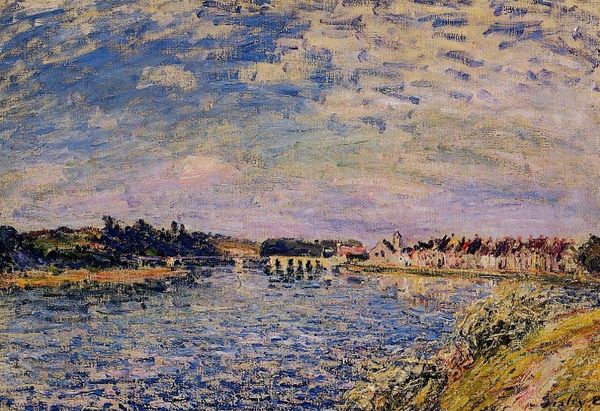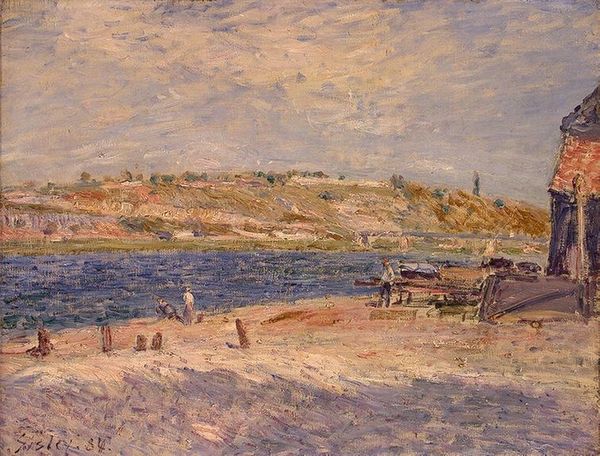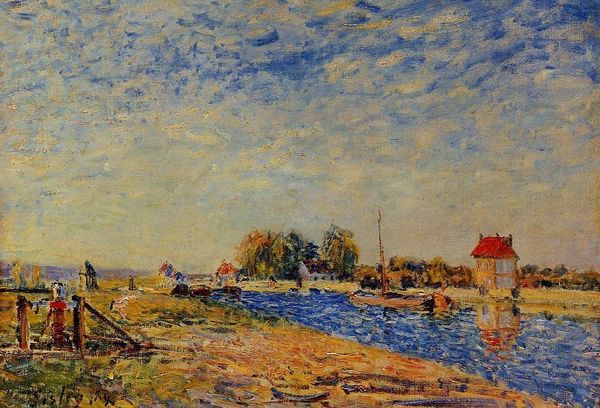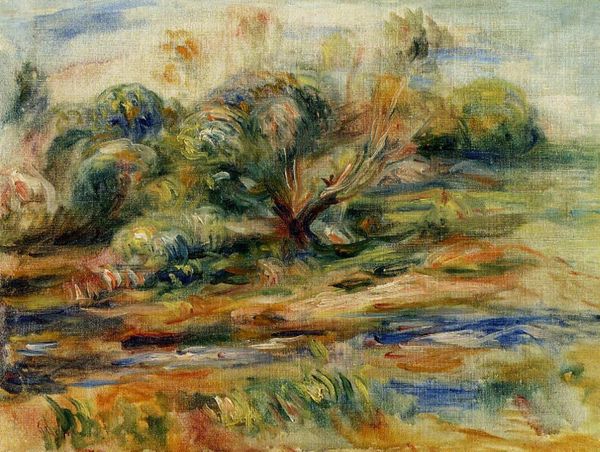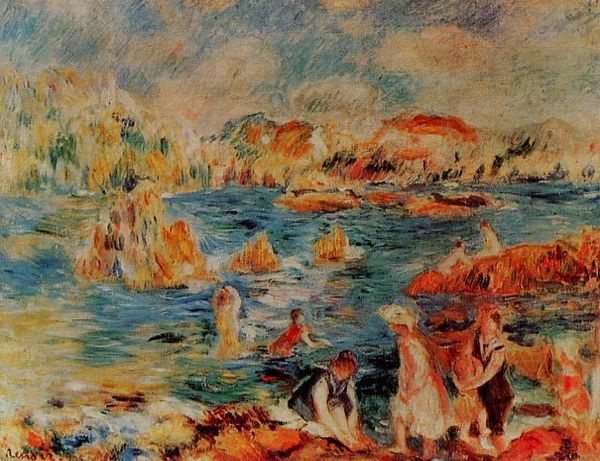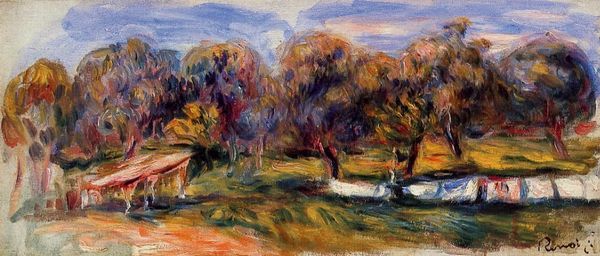
Copyright: Public domain
Editor: Here we have Alfred Sisley's "View of a Village by a River," created in 1892, medium unknown, and it lives in a private collection. There's a palpable sense of movement, particularly in the sky, like a storm's brewing. What do you see in this piece? Curator: I see a record of a fleeting moment, yes, but also a commentary on the relationship between the individual and the rapidly industrializing world. The loose application of pastel, almost like shorthand, mimics the ways rural communities were being marginalized and quickly passed over, perhaps overlooked, during Sisley's time. Look at the way the sky dominates the village; how do you read that power dynamic? Editor: That’s a fascinating way to put it – the sky overpowering the village. I guess I saw it more literally, but I can definitely see how it could represent a bigger force. The sketch-like quality now also feels intentional. Curator: Exactly. Consider, too, who has access to such idyllic views. Were these scenes truly accessible to all, or only to those privileged enough to escape the industrialized centers? Think about the implied social and economic realities embedded in these depictions of leisure and landscape. Is this a reflection or a critique? Editor: It's really making me rethink impressionism. I often considered the movement detached from real issues, and now I’m seeing social commentary that I did not pick up on before. I guess that pastoral life was already vanishing when Sisley painted this view. Curator: Precisely. By capturing the immediacy of the scene, Sisley is also archiving a disappearing way of life, urging us to consider what is being lost. How might that influence our current views of environmental issues? Editor: I’ll definitely keep that in mind next time I visit an impressionist exhibit. I hadn’t thought about those kinds of questions.
Comments
No comments
Be the first to comment and join the conversation on the ultimate creative platform.

